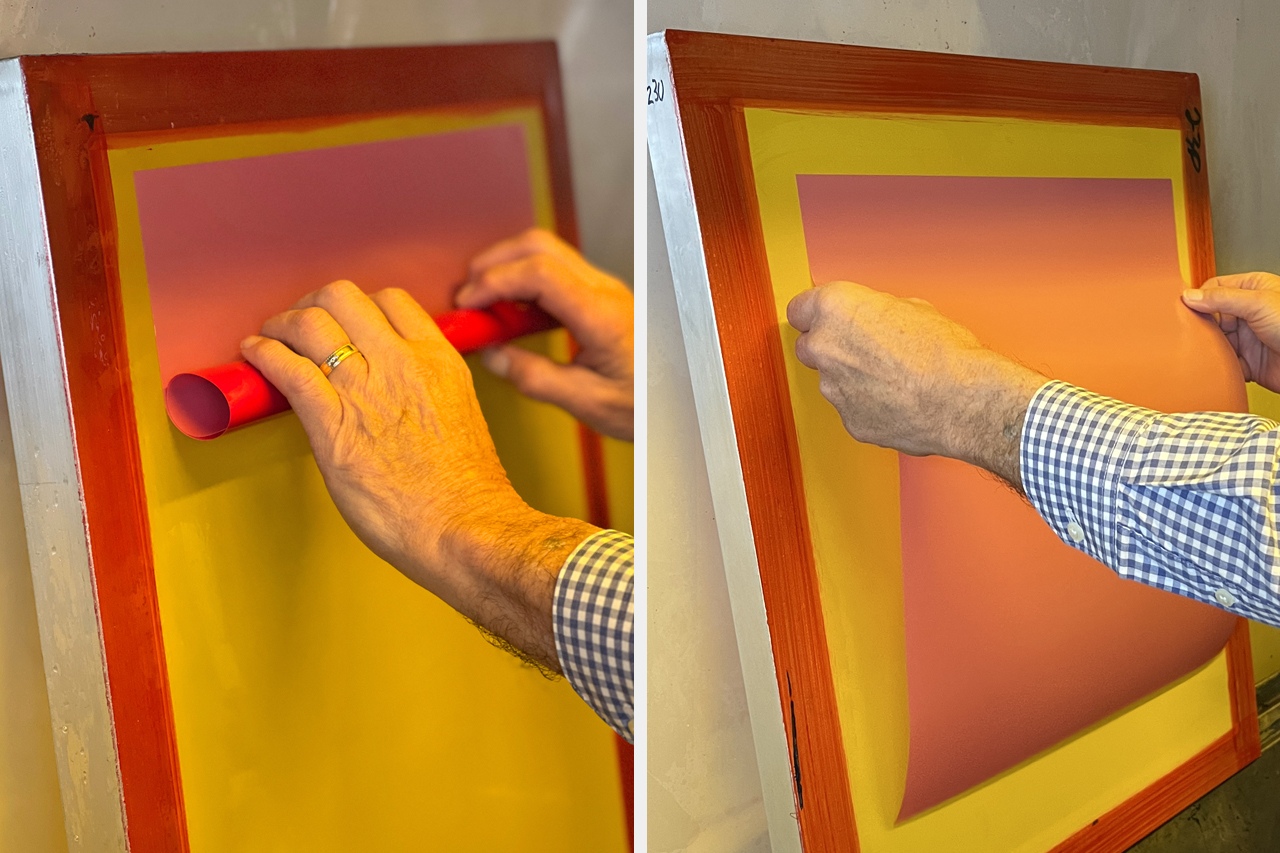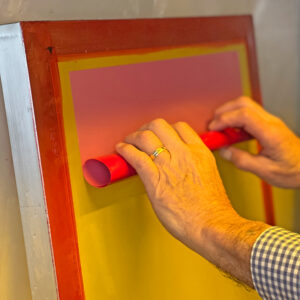
Two Ways To Apply Capillary Film for Screen Printing
Capillary film revolutionizes the screen printing process by offering a coating method for creating consistent, high-quality stencils for screen printing. Traditionally capillary film is used in the electronics and graphic industries because of the high detail and consistent results that can be achieved, however it can benefit the textile industry as well.
In this post we will go over two different ways to apply capillary film to your screen for screen printing. Whether you choose the roll-down method or the spray-gun method, mastering the application of capillary film can elevate your screen printing work, leading to better prints and a more efficient workflow.
WATCH VIDEO: How To Apply Capillary Film 2 Ways
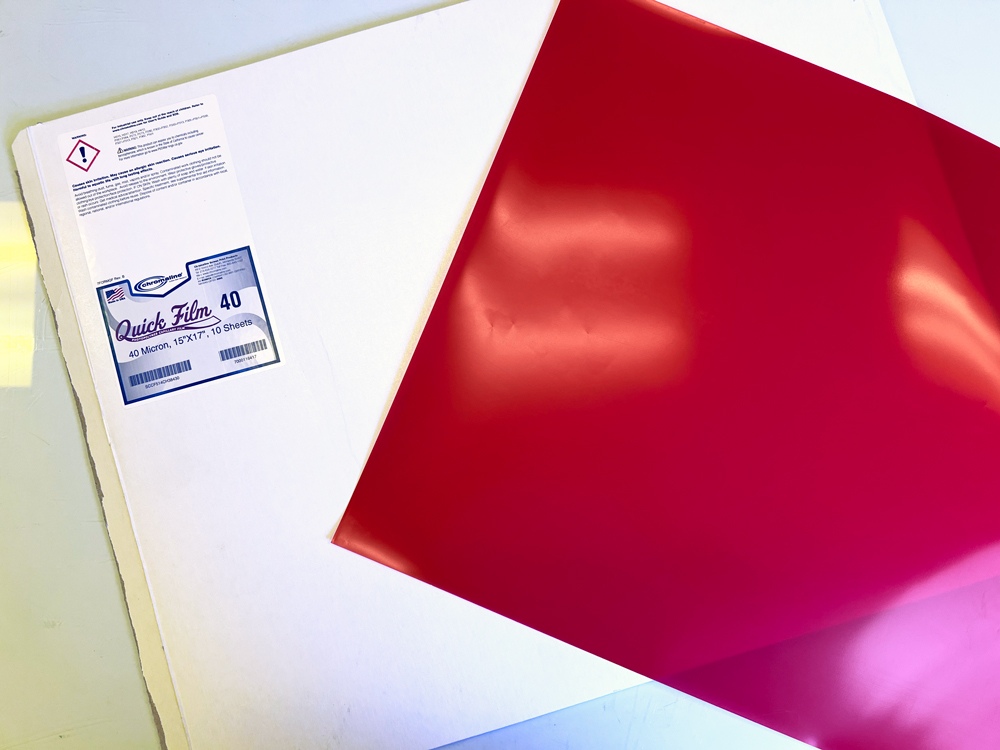
What Is Capillary Film?
Capillary film is a pre-sensitized, dry emulsion sheet used in screen printing to create precise and durable stencils. Unlike traditional liquid emulsions that are manually applied, capillary films offer a uniform thickness and are simpler to apply, leading to more consistent printing results. They come in various thicknesses to suit different printing needs and are chosen based on the level of detail required in the print, mesh count being used, and the viscosity of the ink to be used.
Chromaline offers four different capillary films:
- Quick Film Photopolymer Capillary Film
- Razor Photopolymer Capillary Film
- ProCap Diazo Capillary Film
- MagnaCure Dual Cure Capillary Film
Advantages of Using Capillary Film
- Uniformity: Ensures consistent emulsion thickness across the screen, crucial for detailed prints.
- Efficiency: Reduces the time and mess associated with manual emulsion application.
- Precision: Offers predictable outcomes due to controlled thickness, improving print quality.
- Versatility: Suitable for a wide range of printing applications, from fine art to industrial production.
- Beginner-Friendly: Easy to learn how to use for making screens, great for beginners or if you have multiple different people making your screens.
Tips for Successful Capillary Film Application
- Environment: Work in a clean, controlled environment to prevent dust and debris from contaminating the screen.
- Handling: Handle capillary film with clean, dry hands or gloves to avoid damaging or contaminating the film.
- Trial and Error: Experiment with small sections of film and different thicknesses to find the best match for your specific printing needs.
Applying Capillary Film: Methods and Techniques
The application of capillary film to a screen printing frame is a critical step in preparing for a print run. Two popular methods are the roll-down method and the spray-gun method, each with its own set of procedures and best practices. Both methods have their advantages and can be selected based on the specific requirements of your project, the size of your screen, and your personal preferences.
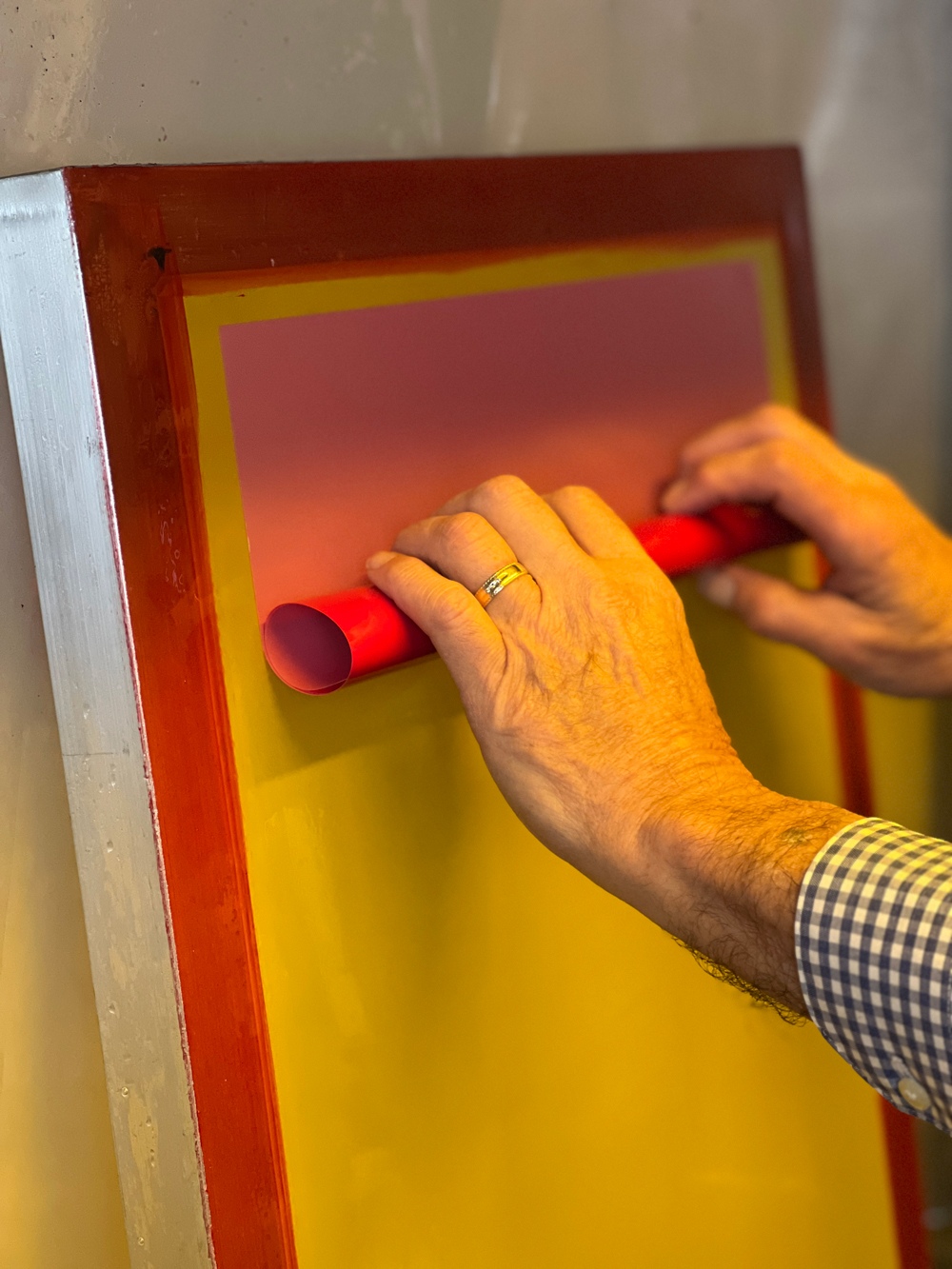
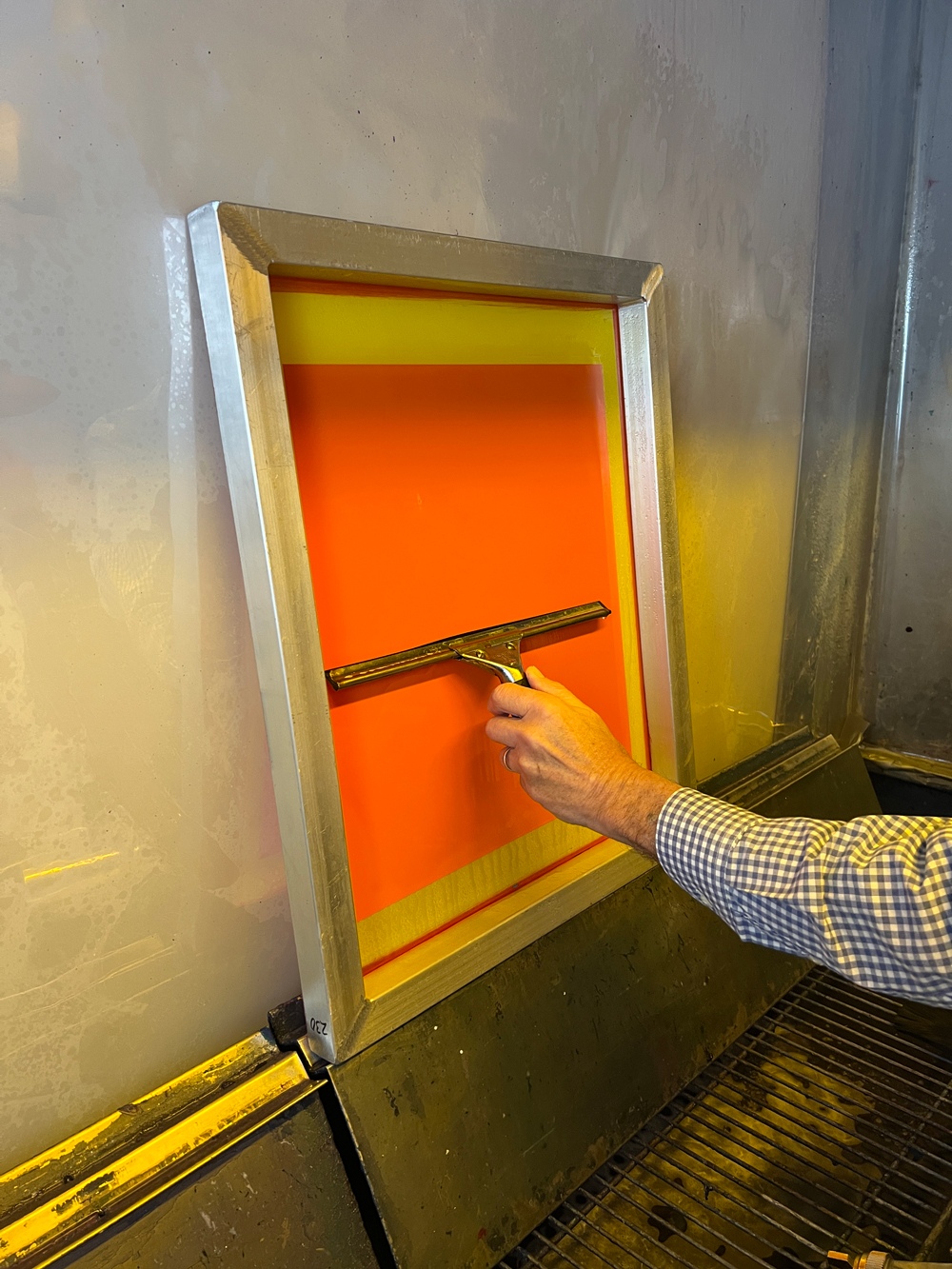
The Roll-Down Method
The roll-down method is a straightforward approach that requires minimal equipment, making it accessible for beginners or those with simpler setups.
Step-by-Step Guide:
- Preparation: Begin with a clean, degreased screen. Ensure the screen is free of dust, oils, and any remnants from previous prints.
- Wetting the Screen: Use a spray nozzle to evenly and thoroughly wet the screen.
- Applying the Film: Make sure your hands are completely dry and slowly roll up the capillary film with the emulsion coating inward and the dull polyester sheet outward. Be careful not to dent the film as you are rolling it. Place the top of the rolled up capillary film on the print side of the screen, pausing for a few seconds to allow the film to secure to the mesh. Slowly roll down the film.
- Remove Bubbles: Use a window squeegee on the ink side of the screen. This action removes air bubbles and excess water, ensuring the film adheres smoothly to the screen. If there are still small bubbles in the image area of your screen, wet your finger and gently touch the bubble. This should suck the capillary film to the mesh, removing the bubble.
- Drying: Leave the screen to dry in a dust-free environment. Drying position does not matter with capillary film.


The Spray-Gun Method
The spray-gun method uses a lighter application of water without the need to roll the film first, reducing the risk of dents and getting the film wet.
Step-by-Step Guide:
- Screen Preparation: Clean and degrease the screen thoroughly before starting the application process.
- Applying Water with a Spray Gun: Use a spray gun mister to evenly apply water to the screen. The goal is to achieve a light tack coat without over-saturating the screen.
- Applying the Film: Carefully lay the capillary film onto the wet screen. Position it accurately to cover the entire printing area. If the film is not where you want it, you can easily reposition it at this point. Then take the spray gun mister and mist the ink side of the screen. This will suck the capillary film into the mesh to secure it.
- Squeegee: Use a window squeegee on the ink side of the screen to remove excess water.
- Drying: Allow the screen to dry completely in a controlled environment. The drying position (horizontal, vertical, squeegee side up, print side up, etc.) does not matter with capillary film.
Contact Chromaline Today
With practice and attention to detail, you can achieve great results using Chromaline's line of capillary films for screen printing. If you have any further questions about how to apply capillary film to your screen or about any of our Chromaline screen printing products, please contact us today.

